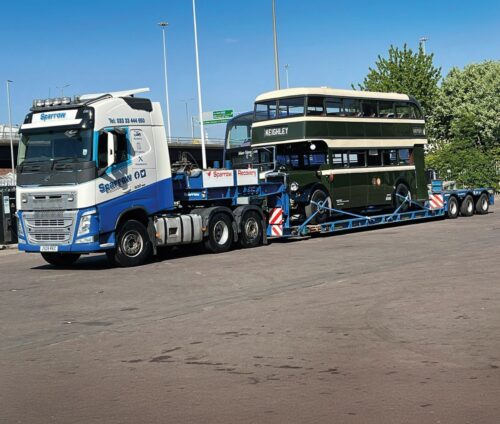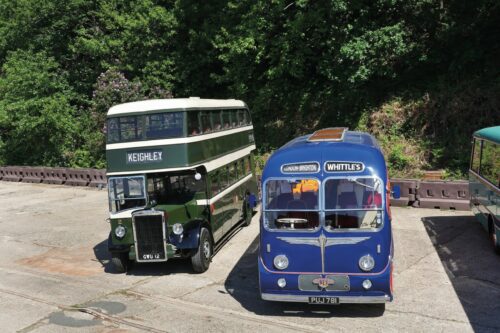
Di Forbes reports from her recent experience on the London to Brighton commercial vehicle run with Todmorden Leyland double-decker GWU 12
Todmorden, in the upper Calder Valley (think TV’s ‘Happy Valley’) is at the confluence of three steep-sided Pennine valleys and is surrounded by moorlands, and until 1888 the boundary between Lancashire and Yorkshire ran though the town, literally bisecting the Town Hall. In the 1890s, the Todmorden & District Carriage Company operated horse-drawn single- and double-deck omnibuses from premises at Golden Lion Yard, but by the turn of the 20th century better transport links for a growing local population were desperately needed. Improvements were needed to local toll roads, and horse drawn buses no longer sufficed. By 1902 Todmorden Corporation Tramways had an order authorising tramways to be built, however it was clear that private financiers wouldn’t be found and on 1 January 1907 Todmorden Corporation became only the second local authority in the country to operate motorbuses (Eastbourne being the first), deciding to invest in buses instead of trams, opting for flexibility and a reduced capital cost.
Almost from conception, Leylands were the vehicle of choice. The Todmorden Leylands were of low-bridge configuration to accommodate both the restrictions of the Millwood depot and a low bridge at Portsmouth. From an initial four buses the company eventually ran a fleet of 40. In 1931 The London Midland and Scottish Railway Company (LMS) bought half of the business, and the company was known as Todmorden Joint Omnibus Committee (TJOC) with the board comprising of four railway and four local authority members. This business model was repeated in Halifax, Huddersfield and Sheffield. The 40-strong fleet paid its profits to the local authority, then in 1948 the LMS was nationalised and became part of British Railways Board.

One of the first
GWU 12 was fleet number 2, and is now referred to as ‘Tod 2.’ The bus came into service on 1 April 1948 (road tax of £82 and 16 shillings paid), spending her entire working life running up and down the hills and valleys around Todmorden and Halifax. The ‘golden age’ of bus travel followed WW2, but from 1955 passenger numbers were starting to drop and in the early 1960s the TJOC was reducing the fleet that had been renewed in the four years immediately following WW2. By the 1960s it was at the end of economic life and needed replacing.
The then General Manager, Mr W E Metcalfe, who had been with the business since 1924, retired and the business passed into the control of Calderdale in 1971, ending local ownership of public transport in Todmorden. ‘Tod’ was retired in 1970 and was gifted to the Todmorden Antiquarian Society, which later gifted her to David Powell in 1997. David knew the bus when he was a child, and followed his father, Thomas, and uncle David who had both been in the employ of TJOC into the bus industry as an apprentice with Ribble Motor Company. He later became part of the management buyout team at Maidstone & District Motor services, moving on to Arriva before eventually becoming chairman of East Lancashire Coachbuilders.
Full restoration of the bus commenced in 1998 with panels replaced, new windows fitted and seats re-trimmed in 1999, then an engine removal and rebuild in January 2001. The bus was single-pack hand painted, woodwork varnished, hand painted lettering applied, including the often-seen ‘spitting is prohibited’ on the top deck. Tod was eventually, according to her TJOC Vehicle Maintenance & Repair Record, completed May 2002.
[…]Are you enjoying this feature? Why not subscribe to continue reading?
Subscribe for 6 issues/weeks from only £6Or login if you are already a subscriber
By subscribing you will benefit from:
• Operator & Supplier Profiles
• Face-to-Face Interviews
• Lastest News
• Test Drives and Reviews
• Legal Updates
• Route Focus
• Industry Insider Opinions
• Passenger Perspective
• Vehicle Launches
• and much more!


